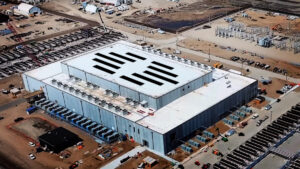July’s Consumer Price Index (CPI) inflation report on Aug. 12 cast a shadow over rising hopes that the Fed would cut rates at its next meeting on September 17.
The CPI data showed that year-over-year inflation was 2.7% last month, up from a cycle low of 2.3% in April 2025. Core CPI, which excludes food and energy prices because of their volatility, rose 3.1% over the last 12 months. That was up from 2.9% in June and 2.8% in May.
The increase in CPI may reflect the impact of recently enacted tariffs as companies start to pass along higher costs from the import taxes to consumers.
We’ll get more insight into whether that’s true on Aug. 29, when the Bureau of Economic Analysis (BEA) reports the July PCE inflation data.
According to a report sent to clients, Bank of America expects the data to show that PCE inflation in July increased 2.6% over the past 12 months, matching June. Its estimate for core PCE is 2.9%, up from 2.8% in June and a cycle low of 2.6% in April.
However, the bank’s economists don’t expect July to be the peak for PCE inflation.
“We expect core PCE inflation to keep trending higher and surpass the 3.0% mark later this year,” wrote Bank of America analysts.
The Federal Reserve is trapped by its dual mandate
Federal Reserve Chairman Jerome Powell, appointed by President Obama in 2012 and again by President Trump in 2017, has said that he’s particularly concerned about inflation rebounding this year in the wake of President Trump’s stiff new tariffs.
According to Yale Budget Lab, the U.S.’s effective tariff rate on imports has increased from 2.4% in 2024 to 18.6% in 2025, the highest rate since 1933.
Related: Fed official sends dire warning on US economy
The Fed’s mission to promote employment and lower prices is harder said than done because its twin goals often contradict one another.
When the Fed raises rates, it lowers inflation, but slower economic activity causes unemployment to rise. The opposite happens when it cuts rates.
As a result, Chairman Powell has advocated for a data-dependent ‘wait-and-see’ approach in 2025.
In short, Powell wants more evidence that inflation won’t reaccelerate and unemployment is continuing to grow before cutting rates to ensure that the Fed doesn’t fuel inflationary fires while trying to stimulate jobs growth.
Unfortunately, economic data suggest that inflation and unemployment are both rising, boxing the Fed in and potentially putting it at risk of falling behind the curve on setting monetary policy.
Data shows the labor market is weakening:
- The World Bank expects US real GDP to fall to 1.4% in 2025 from 2.8% in 2024.
- The Bureau of Labor Statistics reports the U.S. unemployment rate has increased to 4.2% from a cycle low of 3.4% in 2023.
- Challenger, Gray & Christmas data shows 806,383 layoffs in 2025 through July, the most over the first seven months since Covid, and 75% more job cuts than the same period in 2024.
The July unemployment report was particularly concerning because it showed that the U.S. economy only created 73,000 jobs, far fewer than economists predicted.
Importantly, it also contained steep downward revisions to previously reported job growth in May and June.
More Economic Analysis:
- What the star-studded Jackson Hole Fed meeting means to you
- Producer price inflation shocks Fed interest rate cut bets
- White House taps more potential candidates to head the Fed
“Payroll employment rose by 73,000 in July, but the bigger story is the substantial downward revisions to job growth in May and June. Job totals across those two months are now 258,000 lower than previously reported, bringing the three-month average gain down to just 35,000 after it stood at 150,000 a month ago,” wrote Moody’s Analytics’ Dante DeAntonio.
The unrounded unemployment rate was 4.248%, suggesting it wouldn’t take much to increase the rounded rate to 4.3%. A 4.3% rate would be the highest rounded unemployment rate since October 2021.
“So far this year, companies have announced 806,383 job cuts, the highest YTD since 2020 when 1,847,696 were announced. It is up 75% from the 460,530 job cuts announced through the first seven months of last year and is up 6% from the 2024 full year total of 761,358,” said Challenger, Gray & Christmas.
How the U.S. economy got here
- The Covid pandemic caused inflation to plummet to 0.1% year-over-year in May 2020 from 2.5% in January 2020.
- The drop in demand caused by the pandemic was so severe that oil prices went negative in early 2020, and
- GDP collapsed by 5.5% in the first quarter and a staggering 28.1% in the second quarter.
- To kickstart the economy, the Fed cut interest rates to zero percent, and Congress flooded the economy with cash via stimulus payments.
- The 2020 Cares Act, signed into law by President Trump in March 2020, injected $2.2 trillion into the economy, making it the country’s single biggest economic stimulus package ever at about 10% of total GDP.
- Another $900 billion in spending was passed that December. Including additional money spent in 2021, the U.S. spent $4.6 trillion because of Covid, according to the U.S. Government Accountability Office.
- The flood of spending worked, given that inflation-adjusted GDP rebounded, climbing 35% in the third quarter of 2020 and 6.1% in 2021, the highest growth since 1984, when GDP grew by 7.2%, according to the St. Louis Federal Reserve.
- Unfortunately, year-over-year inflation also increased substantially. The Consumer Price Index (CPI) accelerated from its Covid low of 0.1% to a peak of 9.1% in June 2022, according to the U.S. Bureau of Labor Statistics, and the Personal Consumption Expenditures (PCE) Index climbed to 7.25% from its 0.44% low in 2020, according to the Bureau of Economic Analysis.
- The inflation surge caused the Federal Reserve to abandon its Covid-era zero-interest rate policy in 2022, forcing it to engage in its most hawkish pace of interest rate increases since the 1980s, when former Fed Chair Paul Volcker battled runaway inflation.
- Altogether, the Fed increased its Fed Funds Rate, the interest rate charged overnight by banks to each other on reserves, by 5.25% in 2022 and 2023.
- Higher rates successfully wrestled CPI inflation below 3% in 2025
- However, it also caused job losses.
- Nevertheless, with Covid-Era inflation still mostly fresh on the Fed’s minds, officials have hesitated to embrace rate cuts for fear of rekindling inflation.




